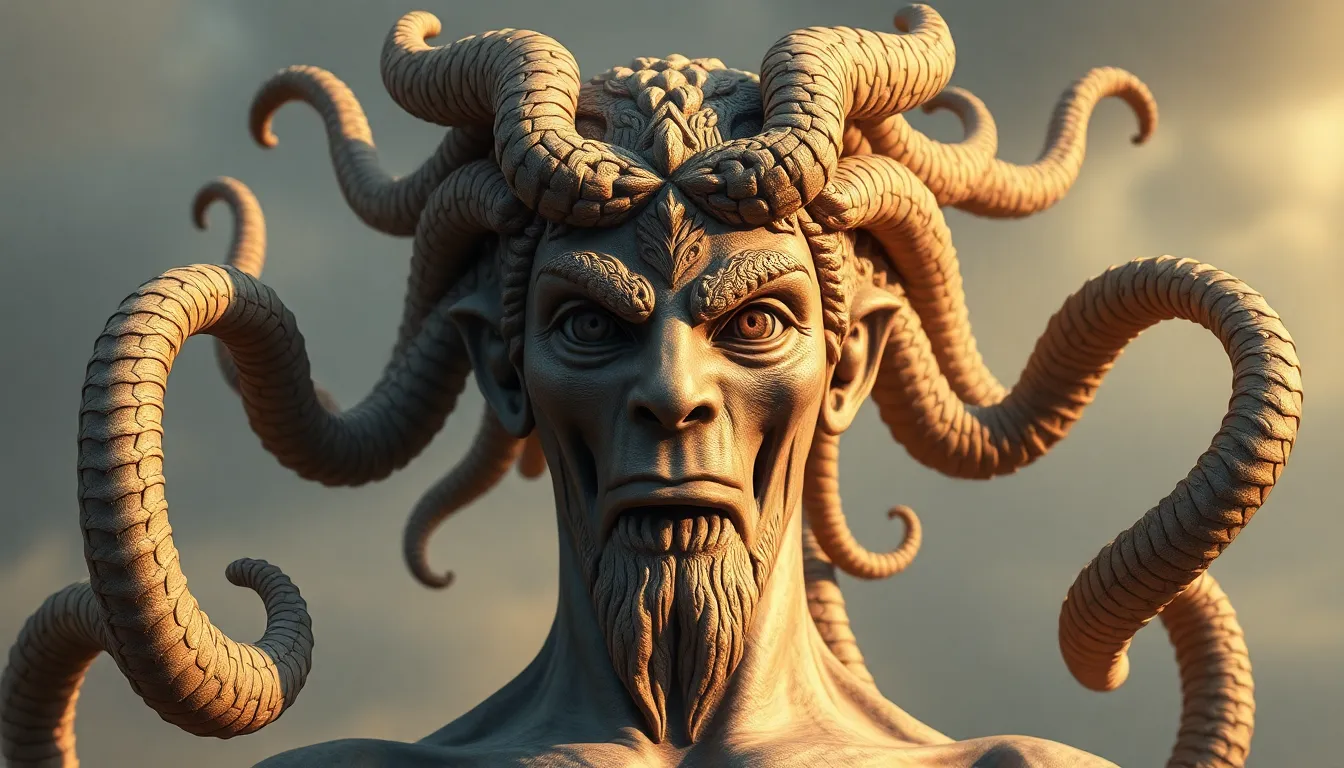The Gorgon’s Gaze: Analyzing Its Psychological Impact
I. Introduction
The myth of the Gorgon, particularly the infamous Medusa, has fascinated cultures for centuries. The Gorgon myth serves as a potent symbol of fear, power, and the complexities of human emotion. The Gorgon’s gaze, which could turn anyone who dared to look upon it into stone, represents an extreme manifestation of both beauty and horror. This article explores the psychological implications of the Gorgon’s gaze, examining its significance as a metaphor for various human experiences.
II. Historical Context of the Gorgon Myth
The origins of the Gorgon myth can be traced back to ancient Greek mythology, where Gorgons were depicted as monstrous women with snakes for hair. The most famous among them, Medusa, was originally a beautiful maiden cursed by Athena. This curse transformed her into a creature feared by all, symbolizing the drastic changes in perception that can occur due to trauma.
Across different societies, the Gorgon has been interpreted in various ways:
- In ancient Greece, she was a symbol of protection against evil.
- In Roman culture, the Gorgon represented the chaos of nature.
- In some Eastern traditions, similar figures embody the duality of creation and destruction.
Over time, the Gorgon’s image evolved from a fearsome monster to a complex figure embodying femininity, rage, and the consequences of male gaze.
III. The Symbolism of the Gorgon’s Gaze
The Gorgon’s gaze serves as a powerful symbol in various contexts. It encapsulates the themes of fear and power:
- Fear: The ability to petrify symbolizes the ultimate fear of vulnerability and helplessness.
- Power: The gaze represents the power to control one’s surroundings and instill fear in others.
This dual nature of the gaze evokes both attraction and repulsion. On one hand, the Gorgon embodies the allure of the unknown, while on the other, she represents the terrifying consequences of confronting that unknown.
The psychological implications of being ‘turned to stone’ can be profound, suggesting a metaphor for emotional paralysis in the face of trauma or fear. Individuals may feel immobilized by their experiences, unable to move forward in their lives.
IV. Psychological Interpretations of the Gorgon’s Gaze
In psychology, the concept of the gaze has been explored extensively, particularly in Lacanian theory, where the gaze represents an object of desire that eludes grasp. The Gorgon’s gaze can be interpreted as a manifestation of this elusive desire, embodying the complexities of human relationships.
The impact of trauma and fear in relation to the Gorgon’s gaze is significant. Those who have experienced trauma may relate to the feeling of being ‘turned to stone’—frozen in time, unable to express emotions or engage with the world.
Moreover, the Gorgon can be seen as a representation of repressed emotions and societal taboos:
- Anger and rage, often associated with femininity, can be feared and suppressed.
- The consequences of societal expectations on individual expression create a dichotomy between inner feelings and outward appearances.
V. The Gorgon in Modern Culture
In contemporary literature, film, and art, the Gorgon continues to be a powerful archetype. Representations of Medusa have appeared in:
- Literature, where she is often portrayed as a tragic figure.
- Film, where her story has been reinterpreted to explore themes of empowerment and victimhood.
- Art, where she is depicted as both a monster and a symbol of female strength.
The Gorgon’s gaze has also found its way into contemporary psychological discussions, serving as a metaphor for various psychological phenomena, such as the impact of trauma on identity and self-perception.
Case studies of modern interpretations of the Gorgon archetype have shown a shift from viewing her solely as a monster to recognizing her as a complex character embodying strength, resilience, and the struggle against oppression.
VI. The Therapeutic Implications of the Gorgon’s Gaze
The Gorgon’s gaze can be utilized as a tool in therapy and self-reflection. By exploring the themes of fear and trauma within this mythological framework, individuals can confront their own ‘gazes’—the fears that paralyze them.
Addressing fear and trauma through mythological frameworks allows for a deeper understanding of personal experiences and the societal pressures that shape them. The role of storytelling and myth in psychological healing is significant, providing a narrative structure through which individuals can explore and articulate their struggles.
VII. Critiques and Counterarguments
While the Gorgon’s gaze offers rich psychological insights, there are alternative interpretations of the Gorgon myth that should be considered. Some critiques argue that:
- The Gorgon may reinforce negative stereotypes of femininity.
- Viewing the gaze solely through a psychological lens limits the broader cultural significance of the myth.
Examination of the limitations of the Gorgon’s gaze as a psychological metaphor reveals the necessity of a multi-faceted approach to understanding myths. Responses to these critiques emphasize the Gorgon’s relevance in contemporary discussions on power dynamics and emotional expression.
VIII. Conclusion
In summary, the Gorgon’s gaze is a powerful symbol with deep psychological implications, reflecting themes of fear, power, and the complexities of human emotion. Through this analysis, we see the enduring impact of the Gorgon in both psychology and culture, highlighting her significance as more than just a monster but as a complex figure representing the struggles of humanity.
As we reflect on the relevance of myth in understanding human psychology, the Gorgon’s gaze continues to resonate, reminding us of the fears and traumas that shape our lives and the power of storytelling in healing and self-discovery.




